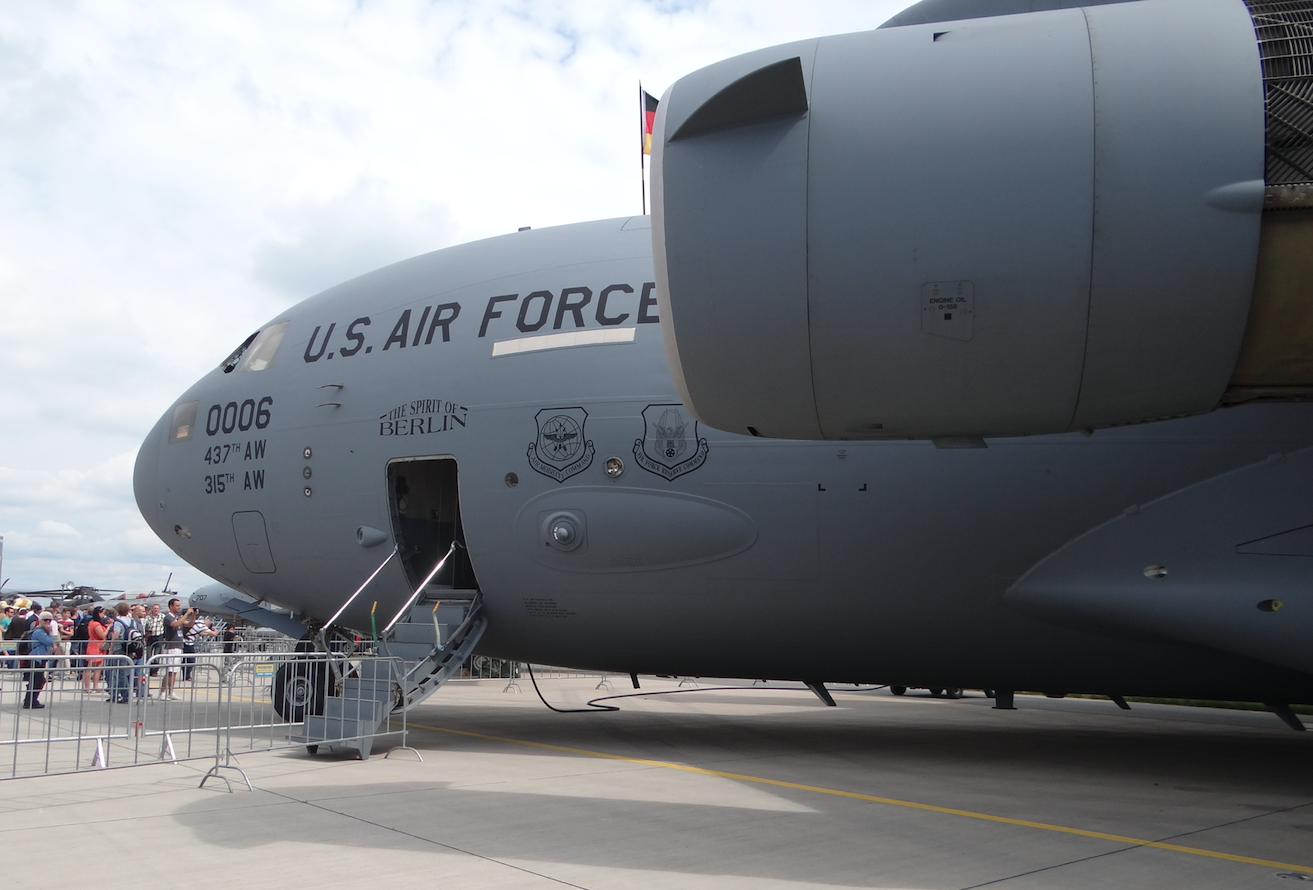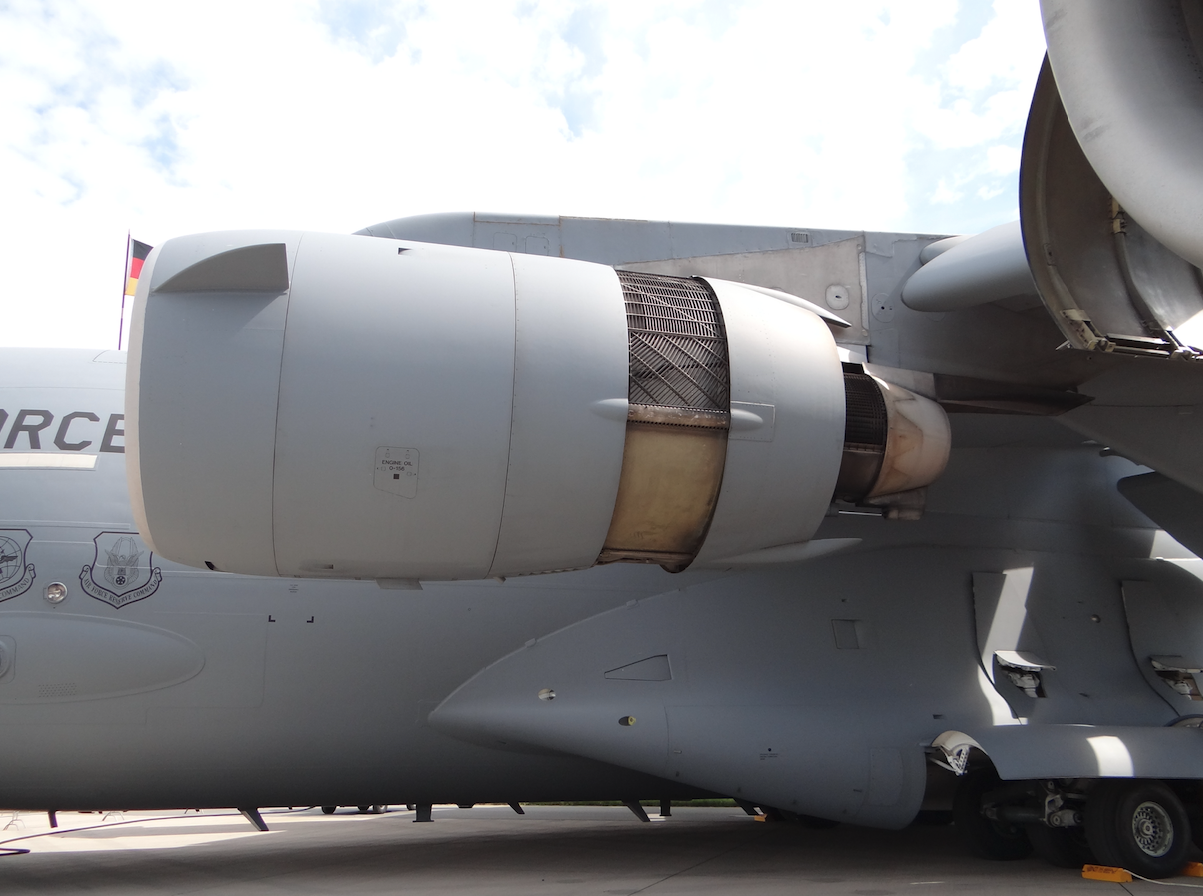Warszawa 2010-04-03
Construction
The design of the Boeing YC-14.
The plane received straight wings, with a two-trapezoidal contour. The profile is super critical. The blades have an extremely rich mechanization. The entire leading edge is occupied by Kruger-type flaps. The trailing edge is divided into 3-segments. The outer segment is equipped with ailerons. The middle segment is equipped with powerful double-slot wideners. They are suspended on large special brackets, ensuring their significant displacement and the creation of a large additional curved surface. In front of the flaps, spoilers (breakers) were placed on the upper surface. The inner segment is also equipped with double flaps, but without slots. Also hung on large supports. Additionally, their upper surface is made of a material resistant to high temperature generated by the exhaust gases of the power unit. The airfoil has an area of 163.7 square meters, an elongation of 9.44, an area load of 470 – 690 kg / square meter.
The fuselage is of a typical transport shape, with a circular cross-section. It begins with the crew cabin referred to as the helicopter type. This is related to the experiences of the Yankee troops in numerous wars, where it was found that not only good visibility forwards and obliquely downwards, but also to the sides and down, and even as far back as possible, is important. As a result, the nose of the machine appears blunt, but is much sharper when viewed from above. And for the speed at which such planes fly as standard, this aerodynamics is correct. The C-130 Herkules received the first such cabin. Behind the cabin, the fuselage turns into a circular cross-section. This part of the fuselage has a very practical and large hold. It has doors mounted on the left and right side. They are used not only for boarding during a stop, but also for landing parachute jumpers. The rear part of the fuselage is raised up. In the lower part, there is a multi-section loading door with an entry ramp. The charge has dimensions of 14.3 m x 3.60 m x 3.40 m.
Written by Karol Placha Hetman



